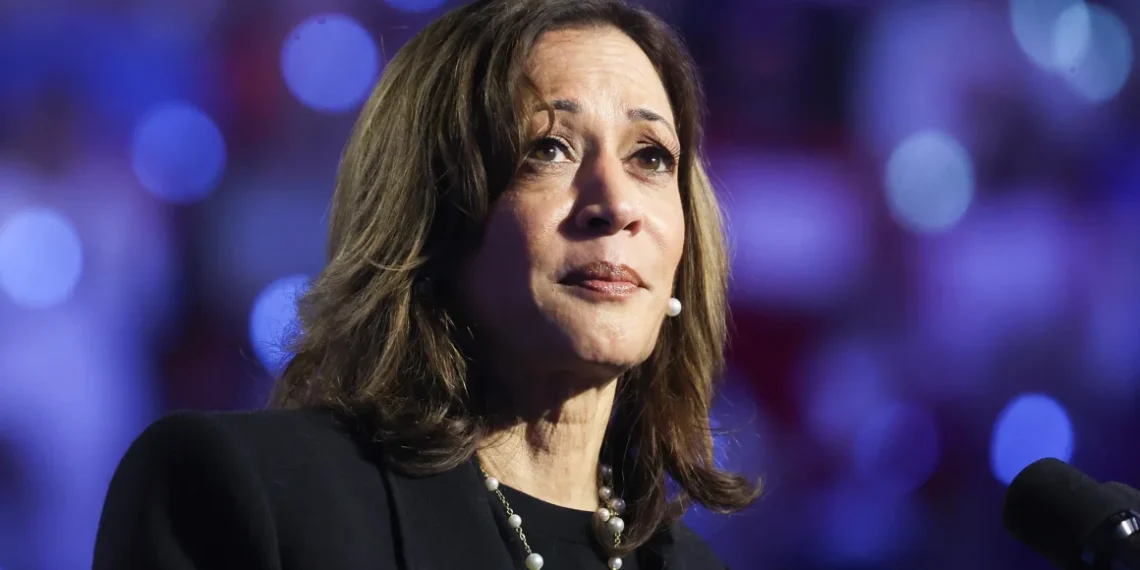Kamala Harris’ Campaign Struggles: What Went Wrong
Kamala Harris’ campaign began with high hopes, targeting a key audience: women who might become her strongest supporters. On a segment of ABC’s “The View,” Harris was given a seemingly easy question that could help her distinguish herself from President Biden. Host Sunny Hostin asked, “What, if anything, would you have done differently than President Biden during the past four years?”
Instead of seizing the chance to outline her own vision, Harris responded, “There is not a thing that comes to mind.” Recognizing the need to clarify, she added that she would consider including a Republican in her Cabinet, but the moment had passed. Harris’ aides immediately began damage control, explaining that her reluctance to differ with Biden stemmed from loyalty to him, despite their policy differences on issues like a higher capital gains tax rate, child tax credits, and border policy.
This hesitation marked a shift in her campaign’s momentum. After a strong debate in September, Harris’ campaign started to falter. New advisors tried to refine her message, but it came at the cost of the confidence and boldness she initially showed. Conversations with more than a dozen senior aides revealed that Harris faced growing challenges, especially as she struggled to balance loyalty to Biden with her vision for change.
In a political climate craving fresh ideas, Harris’ reluctance to criticize Biden proved a missed opportunity. While voters on the left wanted her to distance herself from Biden on issues like economic policies and support for Israel, centrist voters wanted reassurances she could take a stand when needed.
Tension with Biden and the Impact on Harris’ Campaign
Some Democrats argue Biden’s presence in the 2024 race was itself a stumbling block for Harris. After the midterms, advisors suggested Biden step aside to allow the Democratic Party to run a primary campaign where candidates could openly present their ideas. This move might have allowed Harris to gain voter confidence and establish her own identity, rather than being seen as just Biden’s successor. Instead, her campaign often seemed caught between loyalty to Biden and the need to represent change.
In the final weeks, Harris gained momentum, with volunteers knocking on millions of doors and prominent figures like Liz Cheney and Bill Clinton campaigning for her. However, by Election Night, the optimism was replaced with disillusionment as the results turned in Trump’s favor.
Harris’ Choice of Running Mate and Internal Campaign Tensions
Harris’ decision to choose Minnesota Governor Tim Walz as her running mate, instead of Pennsylvania Governor Josh Shapiro, was also revealing. Although Shapiro was seen as a more strategic choice for winning Pennsylvania, Harris favored Walz, appreciating his straightforward style and unassuming personality. However, keeping Walz “in a box” to avoid overshadowing Harris limited his role, raising questions about the campaign’s cohesion and decision-making.
This choice highlighted ongoing internal frictions. Harris’ team was a mix of Biden’s former advisors and her own picks, leading to disagreements on campaign strategy. Despite attempts to bridge these divides, tensions continued, with aides like Stephanie Cutter pushing to control Harris’ message tightly.
The Campaign’s Hopes and Disappointment
Many Democrats had hoped Harris’ campaign could mark a historic win: the first female, Black, and South Asian president. She ran on a platform of positivity and inclusivity, aiming to offer a stark contrast to Trump’s approach. On Election Night, as states were called, optimism filled the room, and supporters celebrated what they believed would be a victory.
Yet as results started to favor Trump, the celebration quieted. By 11 p.m., it became clear that Harris’ supporters would need to regroup. For some Democratic leaders, the defeat wasn’t just about this election—it raised questions about the party’s future strategy and 2028 prospects.
Moving Forward: The Democratic Party’s Path
As Democrats begin to reflect on what went wrong, discussions on 2028 have already begun. In the meantime, states led by Democratic governors are preparing to address potential policy changes, particularly regarding access to abortion and other protections.
For those who left Harris’ election night event early, the loss was both disappointing and a reminder of the long road ahead. As one supporter remarked, “We try to do it right… We’ve got to take a page out of their book.”
- “Kamala Harris’ presidential campaign faced unique challenges, from navigating loyalty to President Biden to managing internal conflicts within her team. This article explores the critical moments that shaped her journey and the lessons learned along the way.”
- “As Kamala Harris pursued the presidency, her campaign encountered complex hurdles, including balancing her identity as a trailblazer with the need for loyalty to her political allies. Dive into the story of missed opportunities and unrealized potential.”
- “Kamala Harris’ journey through the 2024 campaign highlighted a range of challenges: loyalty conflicts, internal campaign struggles, and shifting voter sentiment. Discover how these factors converged to impact her historic run.”
- “In a race marked by high hopes and steep challenges, Kamala Harris’ campaign fought to define itself in a shifting political landscape. Read about the factors that made – and ultimately unmade – her path to the presidency.”
- “The 2024 campaign was an intense experience for Kamala Harris and her team, revealing issues of loyalty, identity, and strategy. This article delves into the highs, lows, and defining moments of her presidential bid.”
This article was rewritten by JournosNews.com based on verified reporting from trusted sources. The content has been independently reviewed, fact-checked, and edited for accuracy, neutrality, tone, and global readability in accordance with Google News and AdSense standards.
All opinions, quotes, or statements from contributors, experts, or sourced organizations do not necessarily reflect the views of JournosNews.com. JournosNews.com maintains full editorial independence from any external funders, sponsors, or organizations.
Stay informed with JournosNews.com — your trusted source for verified global reporting and in-depth analysis. Follow us on Google News, BlueSky, and X for real-time updates.














